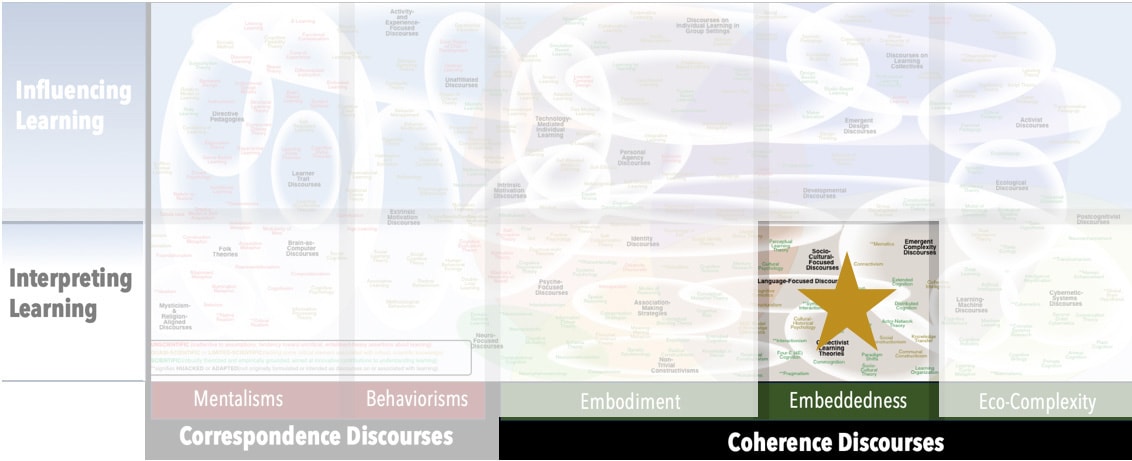AKA
Organizational Knowledge Creation
Focus
Iterative process by which knowledge is elaborated as it cycles through tacit and explicit formsPrincipal Metaphors
The SECI Model of Knowledge Dimensions is translated from Japanese, and that translation presents significant issues when it comes to efforts to identify grounding metaphors. Explicitly, notions associated with the Acquisition Metaphor figure prominently. However, close reading suggests that the model is developed around more situational and adaptive notions that can be applied simultaneously at the individual and organizational levels:- Knowledge is … scope of possible action and interpretation
- Knowing is … effective action and interpretation
- Learner is … an adaptive system (individual and organizational)
- Learning is … elaborating
- Teaching is … N/A
Originated
1990sSynopsis
The SECI Model of Knowledge Dimensions rests on the metaphor that knowledge is something that can be converted from one form (tacit or explicit) to another. The model offers a taxonomy of four elements of knowledge conversion, aiming at a description of how organizational knowledge is maintained and elaborated. Four elements of conversion are identified as:- Socialization (tacit to tacit) – knowledge transferred through direct social interaction
- Externalization (tacit to explicit) – knowledge formalized by presenting, publishing, etc.
- Combination (explicit to explicit) – knowledge elaborating by organizing, integrating, etc.
- Internalization (explicit to tacit) – individual receiving and/or applying knowledge.
Commentary
The SECI Model of Knowledge Dimensions is based on studies of Japanese organizations, and it’s fair to say that understanding the model (not to mention, hope of applying the model) relies on a deep appreciation of some distinct qualities of Japanese culture, especially around matters of collectivity and tacit knowledge. For example, the model assumes a fluid fusing of individual and collective knowledge. As well, its heavy emphasis on tacit knowledge is reflective of the fact that Japanese workers often stay with the same organization for their entire careers.Authors and/or Prominent Influences
Ikujiro Nonaka; Hirotaka TakeuchiStatus as a Theory of Learning
The SECI Model of Knowledge Dimensions is a descriptive theory of the simultaneous learning of an individual and an organization.Status as a Theory of Teaching
The SECI Model of Knowledge Dimensions is not a theory of teaching.Status as a Scientific Theory
The SECI Model of Knowledge Dimensions is derived from substantial research on organizations, and so it has a significant empirical base. It is difficult to assess the extent to which its authors were attentive to metaphors of learning and associated phenomenon. However, it is evident that translators were quite inattentive to such matters.Map Location

Please cite this article as:
Davis, B., & Francis, K. (2020). “SECI Model of Knowledge Dimensions” in Discourses on Learning in Education. https://learningdiscourses.com.
⇦ Back to Map
⇦ Back to List
